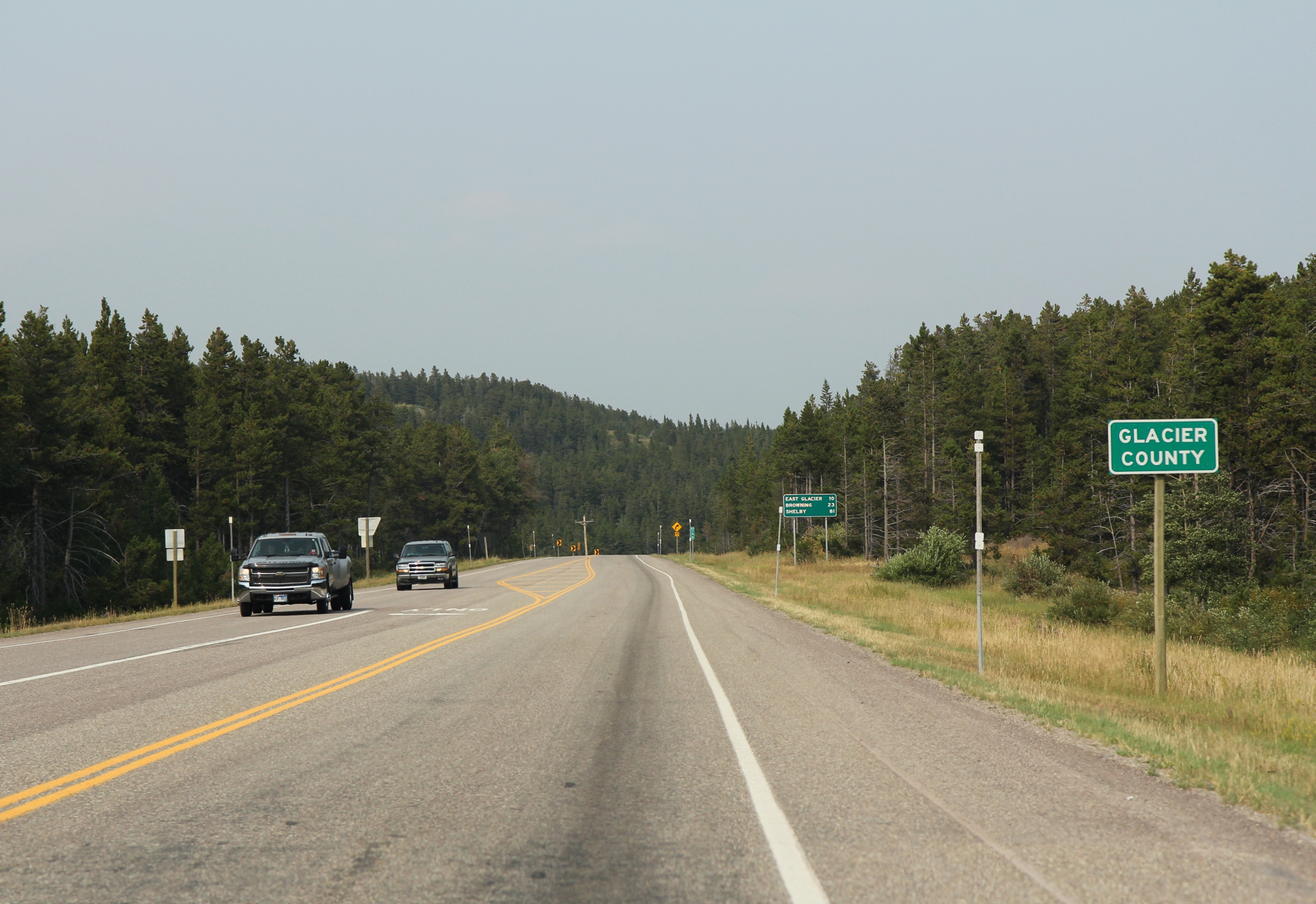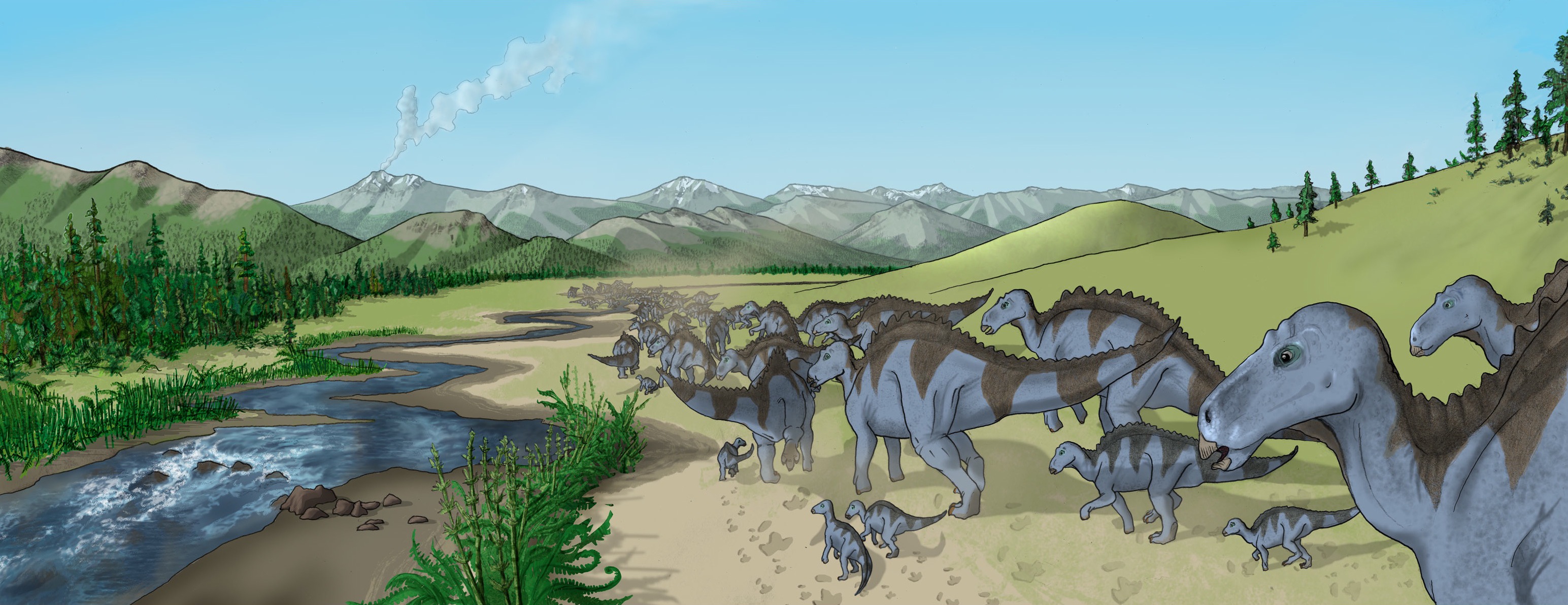|
Achelousaurus Horneri
''Achelousaurus'' () is a genus of centrosaurine ceratopsid dinosaur that lived during the Late Cretaceous Period of what is now North America, about 74.2 million years ago. The first fossils of ''Achelousaurus'' were collected in Montana in 1987, by a team led by Jack Horner, with more finds made in 1989. In 1994, ''Achelousaurus horneri'' was described and named by Scott D. Sampson; the generic name means "Achelous lizard", in reference to the Greek deity Achelous, and the specific name refers to Horner. The genus is known from a few specimens consisting mainly of skull material from individuals, ranging from juveniles to adults. A large centrosaurine, ''Achelousaurus'' supposedly was about long, with a weight of about . As a ceratopsian, it walked on all fours, had a short tail and a large head with a hooked beak. It had a bony neck-frill at the rear of the skull, which sported a pair of long spikes, which curved towards the outside. Adult ''Achelousaurus'' had rough ... [...More Info...] [...Related Items...] OR: [Wikipedia] [Google] [Baidu] |
Late Cretaceous
The Late Cretaceous (100.5–66 Ma) is the younger of two epochs into which the Cretaceous Period is divided in the geologic time scale. Rock strata from this epoch form the Upper Cretaceous Series. The Cretaceous is named after ''creta'', the Latin word for the white limestone known as chalk. The chalk of northern France and the white cliffs of south-eastern England date from the Cretaceous Period. Climate During the Late Cretaceous, the climate was warmer than present, although throughout the period a cooling trend is evident. The tropics became restricted to equatorial regions and northern latitudes experienced markedly more seasonal climatic conditions. Geography Due to plate tectonics, the Americas were gradually moving westward, causing the Atlantic Ocean to expand. The Western Interior Seaway divided North America into eastern and western halves; Appalachia and Laramidia. India maintained a northward course towards Asia. In the Southern Hemisphere, Australia and Ant ... [...More Info...] [...Related Items...] OR: [Wikipedia] [Google] [Baidu] |
Einiosaurus
''Einiosaurus'' is a genus of herbivorous centrosaurine ceratopsian dinosaur from the Upper Cretaceous (Campanian stage) of northwestern Montana. The name means 'buffalo lizard', in a combination of Blackfeet Indian ''eini'' and Latinized Ancient Greek ''sauros''; the specific name (''procurvicornis'') means 'with a forward-curving horn' in Latin. ''Einiosaurus'' is medium-sized with an estimated body length at . History of discovery The Landslide Butte expeditions ''Einiosaurus'' is an exclusively Montanan dinosaur, and all of its known remains are currently held at the Museum of the Rockies in Bozeman, Montana. At least fifteen individuals of varying ages are represented by three adult skulls and hundreds of other bones from two low-diversity, monospecific (one species) bonebeds, which were discovered by Jack Horner in 1985 and excavated from 1985 to 1989 by Museum of the Rockies field crews. Horner had not been searching for horned dinosaurs. In the spring of 1985 he had b ... [...More Info...] [...Related Items...] OR: [Wikipedia] [Google] [Baidu] |
Maiasaura
''Maiasaura'' (from the Greek ''μαῖα'', meaning "good mother" and ''σαύρα'', the feminine form of ''saurus'', meaning "reptile") is a large herbivorous saurolophine hadrosaurid ("duck-billed") dinosaur genus that lived in the area currently covered by the state of Montana and the province of Alberta, Canada in the Upper Cretaceous Period (mid to late Campanian), about 76.7 million years ago.Horner, J. R., Schmitt, J. G., Jackson, F., & Hanna, R. (2001). Bones and rocks of the Upper Cretaceous Two Medicine-Judith River clastic wedge complex, Montana. In Field trip guidebook, Society of Vertebrate Paleontology 61st Annual Meeting: Mesozoic and Cenozoic Paleontology in the Western Plains and Rocky Mountains. Museum of the Rockies Occasional Paper (Vol. 3, pp. 3-14). The first remains of ''Maiasaura'' were discovered in 1978 by Bynum, Montana resident Laurie Trexler. The genus was named in 1979. The name refers to the find of nests with eggs, embryos and young animals, in a ... [...More Info...] [...Related Items...] OR: [Wikipedia] [Google] [Baidu] |
Willow Creek (Montana)
There are 45 streams named Willow Creek in the U.S. state of Montana. * Willow Creek (Beaverhead County, Montana), , el. * Willow Creek (Beaverhead County, Montana), , el. * Willow Creek (Big Horn County, Montana), , el. * Willow Creek (Big Horn County, Montana), , el. * Willow Creek (Big Horn County, Montana), , el. * Willow Creek (Big Horn County, Montana), , el. * Willow Creek (Big Horn County, Montana), , el. * Willow Creek (Blaine County, Montana), , el. * Willow Creek (Blaine County, Montana), , el. * Willow Creek (Carbon County, Montana), , el. * Willow Creek (Carter County, Montana), , el. * Willow Creek (Cascade County, Montana), , el. * Willow Creek (Chouteau County, Montana), , el. * Willow Creek (Deer Lodge County, Montana), , el. * Willow Creek (Fergus County, Montana), , el. * Willow Creek (Flathead County, Montana), , el. * Willow Creek (Gallatin County, Montana), , el. * Willow Creek (Glacier County, Montana), , el. * Willow Creek ... [...More Info...] [...Related Items...] OR: [Wikipedia] [Google] [Baidu] |
Paleontologist
Paleontology (), also spelled palaeontology or palæontology, is the scientific study of life that existed prior to, and sometimes including, the start of the Holocene epoch (roughly 11,700 years before present). It includes the study of fossils to classify organisms and study their interactions with each other and their environments (their paleoecology). Paleontological observations have been documented as far back as the 5th century BC. The science became established in the 18th century as a result of Georges Cuvier's work on comparative anatomy, and developed rapidly in the 19th century. The term itself originates from Greek (, "old, ancient"), (, ( gen. ), "being, creature"), and (, "speech, thought, study"). Paleontology lies on the border between biology and geology, but differs from archaeology in that it excludes the study of anatomically modern humans. It now uses techniques drawn from a wide range of sciences, including biochemistry, mathematics, and engineering. ... [...More Info...] [...Related Items...] OR: [Wikipedia] [Google] [Baidu] |
Glacier County
Glacier County is located in the U.S. state of Montana. As of the 2020 census, the population was 13,778. The county is located in northwestern Montana between the Great Plains and the Rocky Mountains, known to the Blackfeet as the "Backbone of the World". The county is geographically and culturally diverse and includes the Blackfeet Indian Reservation, Glacier National Park, and Lewis and Clark National Forest. The county is bordered by 75 miles of international boundary with two ports of entry ( Piegan and Del Bonita) open year-round and one seasonal (Chief Mountain) international border crossing into Alberta, Canada. Settlements Several small unincorporated communities, one incorporated town, and one incorporated city are located within the county. Cut Bank, the county seat with a population of around 3000, is located in eastern Glacier County, on the edge of the Great Plains. Cut Bank arose from the railroad and agriculture needs of the surrounding area, and was foster ... [...More Info...] [...Related Items...] OR: [Wikipedia] [Google] [Baidu] |
Metabolic Rate
Metabolism (, from el, μεταβολή ''metabolē'', "change") is the set of life-sustaining chemical reactions in organisms. The three main functions of metabolism are: the conversion of the energy in food to energy available to run cellular processes; the conversion of food to building blocks for proteins, lipids, nucleic acids, and some carbohydrates; and the elimination of metabolic wastes. These enzyme-catalyzed reactions allow organisms to grow and reproduce, maintain their structures, and respond to their environments. The word metabolism can also refer to the sum of all chemical reactions that occur in living organisms, including digestion and the transportation of substances into and between different cells, in which case the above described set of reactions within the cells is called intermediary (or intermediate) metabolism. Metabolic reactions may be categorized as ''catabolic'' – the ''breaking down'' of compounds (for example, of glucose to pyruvate by cel ... [...More Info...] [...Related Items...] OR: [Wikipedia] [Google] [Baidu] |
Laramidia
Laramidia was an island continent that existed during the Late Cretaceous period (99.6–66 Ma), when the Western Interior Seaway split the continent of North America in two. In the Mesozoic era, Laramidia was an island land mass separated from Appalachia to the east by the Western Interior Seaway. The seaway eventually shrank, split across the Dakotas, and retreated toward the Gulf of Mexico and the Hudson Bay. The masses joined, forming the continent of North America. Laramidia is named after the Laramide orogeny. The name was coined by J. David Archibald in 1996. Geography Laramidia stretched from modern-day Alaska to Mexico. The area is rich in dinosaur fossils. Tyrannosaurs, dromaeosaurids, troodontids, hadrosaurs, ceratopsians (including ''Kosmoceratops'' and ''Utahceratops''), pachycephalosaurs, and titanosaur sauropods are some of the dinosaur groups that lived on this landmass. A strong latitudinal climatic gradient existed on the landmass in the final 15 million years ... [...More Info...] [...Related Items...] OR: [Wikipedia] [Google] [Baidu] |
Two Medicine Formation
The Two Medicine Formation is a geological formation, or rock body, in northwestern Montana and southern Alberta that was deposited between and (million years ago), during Campanian (Late Cretaceous) time. It crops out to the east of the Rocky Mountain Overthrust Belt, and the western portion (about thick) of this formation is folded and faulted while the eastern part, which thins out into the Sweetgrass Arch, is mostly undeformed plains. Below the formation are the nearshore (beach and tidal zone) deposits of the Virgelle Sandstone, and above it is the marine Bearpaw Shale. Throughout the Campanian, the Two Medicine Formation was deposited between the western shoreline of the Late Cretaceous Interior Seaway and the eastward advancing margin of the Cordilleran Overthrust Belt. The Two Medicine Formation is mostly sandstone, deposited by rivers and deltas. History of research In 1913 in paleontology, 1913, a US Geological Survey crew headed by Eugene Stebinger and a US Nationa ... [...More Info...] [...Related Items...] OR: [Wikipedia] [Google] [Baidu] |
Pachyrhinosaurini
Pachyrhinosaurini is a tribe (biology), tribe of Centrosaurinae, centrosaurine dinosaurs. The clade existed during the Late Cretaceous, about 84.9 to 68.5 million years ago, evolving during the earliest Campanian, and becoming extinct in the Maastrichtian. The tribe contains three genera: ''Einiosaurus'', ''Achelousaurus'', and ''Pachyrhinosaurus''. ''Pachyrhinosaurus'' and ''Achelousaurus'' form the clade of pachyrhinosaurins called the Pachyrostra ("thick-snouts"), characterized primarily by their nasal bosses. Classification Pachyrhinosaurini was defined in 2012 by Fiorillo & Tykoski. It was defined as all centrosaurine ceratopsids more closely related to ''Pachyrhinosaurus canadensis'' than to ''Centrosaurus apertus''. It was defined during the description of ''Pachyrhinosaurus perotorum'', a species from Alaska. The cladogram below represents the findings of Lund et al., 2016, in their description of ''Machairoceratops cronusi''. ''Wendiceratops pinhornensis'', ''X ... [...More Info...] [...Related Items...] OR: [Wikipedia] [Google] [Baidu] |
Styracosaurus
''Styracosaurus'' ( ; meaning "spiked lizard" from the Ancient Greek / "spike at the butt-end of a spear-shaft" and / "lizard") is a genus of herbivorous ceratopsian dinosaur from the Cretaceous Period (Campanian stage), about 75.5 to 74.5 million years ago. It had four to six long parietal spikes extending from its neck frill, a smaller jugal horn on each of its cheeks, and a single horn protruding from its nose, which may have been up to long and wide. The function or functions of the horns and frills have been debated for many years. ''Styracosaurus'' was a relatively large dinosaur, reaching lengths of and weighing about . It stood about tall. ''Styracosaurus'' possessed four short legs and a bulky body. Its tail was rather short. The skull had a beak and shearing cheek teeth arranged in continuous dental batteries, suggesting that the animal sliced up plants. Like other ceratopsians, this dinosaur may have been a herd animal, travelling in large groups, as sugges ... [...More Info...] [...Related Items...] OR: [Wikipedia] [Google] [Baidu] |









